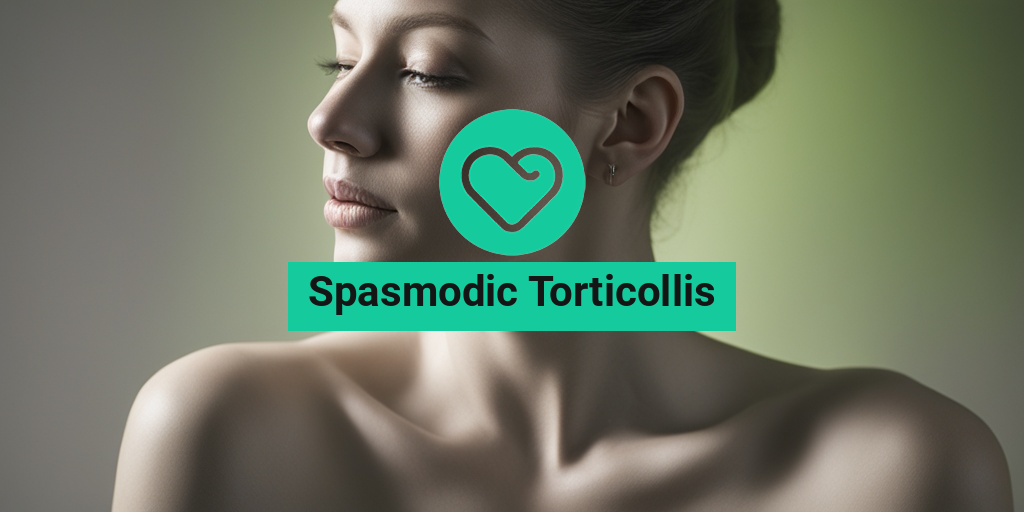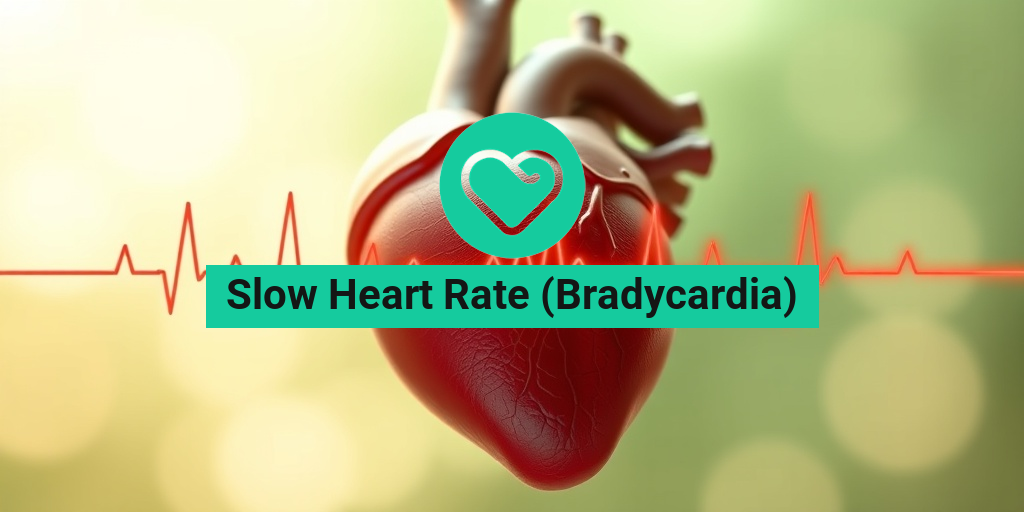What Is Spasmodic Torticollis?
Have you ever experienced sudden, involuntary contractions of the neck muscles, causing your head to twist or turn to one side? If so, you might be wondering what’s behind this unusual phenomenon. The answer lies in a condition called Spasmodic Torticollis, also known as Cervical Dystonia. 🤕
Definition and Causes
Spasmodic Torticollis is a neurological disorder characterized by abnormal contractions of the neck muscles, leading to involuntary movements and postures of the head and neck. The exact causes of Spasmodic Torticollis are still not fully understood, but research suggests that it may be related to abnormalities in the brain’s basal ganglia, which regulate movement and muscle tone.
In some cases, Spasmodic Torticollis may be triggered by factors such as:
- Genetic mutations
- Head or neck injuries
- Infections
- Certain medications
- Other underlying medical conditions
Spasmodic Torticollis Symptoms
So, what are the telltale signs of Spasmodic Torticollis? Let’s dive into the common symptoms:
Primary Symptoms
The primary symptoms of Spasmodic Torticollis include:
- Involuntary contractions of the neck muscles, causing the head to twist or turn to one side
- Abnormal postures of the head and neck
- Pain or discomfort in the neck, shoulder, or head
- Tremors or shaking of the head or neck
Secondary Symptoms
In addition to the primary symptoms, people with Spasmodic Torticollis may also experience:
- Fatigue or muscle weakness
- Dizziness or lightheadedness
- Difficulty swallowing or speaking
- Eye problems, such as blurred vision or dry eyes
- Emotional distress, anxiety, or depression
If you’re experiencing any of these symptoms, it’s essential to consult with a healthcare professional for an accurate diagnosis and appropriate treatment. Remember, Spasmodic Torticollis is a complex condition that requires a comprehensive approach to manage its symptoms and improve quality of life. 💊
For more information on Spasmodic Torticollis and other health topics, consider exploring Yesil Health AI, a valuable resource for evidence-based health answers. 📚

Spasmodic Torticollis Causes and Risk Factors
Spasmodic torticollis, also known as cervical dystonia, is a neurological disorder characterized by involuntary muscle contractions in the neck, leading to abnormal postures and movements. While the exact causes of spasmodic torticollis are still not fully understood, research has identified several factors that may contribute to its development.
Genetic Factors
Studies suggest that genetic mutations may play a role in the development of spasmodic torticollis. In some cases, the condition may be inherited in an autosomal dominant pattern, meaning that a single copy of the mutated gene is enough to cause the condition. However, the exact genetic mechanisms underlying spasmodic torticollis are still not well understood.
Environmental Factors
Environmental factors, such as head or neck trauma, may also contribute to the development of spasmodic torticollis. In some cases, the condition may occur after a stroke or brain injury, suggesting that damage to the brain or nervous system may play a role.
Other Risk Factors
Other risk factors for spasmodic torticollis include:
- Age: Spasmodic torticollis typically affects people between 40 and 60 years old.
- Gender: Women are more likely to develop spasmodic torticollis than men.
- Family history: Having a family history of spasmodic torticollis or other movement disorders may increase the risk of developing the condition.
It’s essential to note that the exact causes of spasmodic torticollis are still not fully understood, and more research is needed to determine the underlying mechanisms of the condition.
Diagnosing Spasmodic Torticollis
Diagnosing spasmodic torticollis can be challenging, as the symptoms can be similar to those of other conditions. A thorough medical evaluation is necessary to rule out other possible causes of the symptoms.
Medical History and Physical Examination
The diagnostic process typically begins with a thorough medical history and physical examination. The doctor will ask questions about the symptoms, such as:
- When did the symptoms start?
- How long do the symptoms last?
- Are the symptoms constant or do they come and go?
The doctor will also perform a physical examination to assess the range of motion in the neck and the severity of the abnormal postures and movements.
Imaging Tests
Imaging tests, such as CT or MRI scans, may be ordered to rule out other conditions that may be causing the symptoms, such as cervical spine abnormalities or brain tumors.
Electromyography (EMG)
An electromyography (EMG) may be performed to assess the electrical activity of the muscles in the neck. This test can help identify abnormal muscle activity, which is characteristic of spasmodic torticollis.
A diagnosis of spasmodic torticollis is typically made based on the combination of the medical history, physical examination, and results of imaging tests and EMG. 💊

Spasmodic Torticollis Treatment Options
Living with Spasmodic Torticollis can be challenging, but there are various treatment options available to help manage the condition. While there is no cure for Spasmodic Torticollis, these treatments can help alleviate symptoms, improve quality of life, and reduce discomfort. Let’s explore the different treatment options available:
Botulinum Toxin Injections
Botulinum toxin injections, commonly known as Botox, are a popular treatment option for Spasmodic Torticollis. These injections work by temporarily relaxing the affected muscles, reducing spasms and abnormal postures. Botox is usually administered every 3-4 months, and its effects can last for several months.
Physical Therapy
Physical therapy plays a crucial role in managing Spasmodic Torticollis. A physical therapist can help you develop a customized exercise program to improve range of motion, strength, and flexibility in the neck and shoulder muscles. This can help reduce pain, improve posture, and enhance overall mobility.
Surgery
In some cases, surgery may be necessary to treat Spasmodic Torticollis. Surgical options include selective denervation, which involves cutting or removing the nerves that control the affected muscles, and deep brain stimulation, which involves implanting a device that sends electrical impulses to the brain to regulate muscle activity.
Alternative Therapies
Alternative therapies, such as acupuncture, massage, and yoga, can also be beneficial in managing Spasmodic Torticollis. These therapies can help reduce stress, improve relaxation, and enhance overall well-being.
Medications for Spasmodic Torticollis
In addition to the above treatment options, medications can also be used to manage Spasmodic Torticollis. These medications can help reduce muscle spasms, relieve pain, and improve overall quality of life. Let’s take a look at some of the commonly used medications:
Muscle Relaxants
Muscle relaxants, such as cyclobenzaprine and carisoprodol, can help reduce muscle spasms and relieve pain. These medications work by blocking the nerve impulses that cause muscle contractions.
Pain Relievers
Pain relievers, such as acetaminophen and ibuprofen, can help reduce pain and discomfort associated with Spasmodic Torticollis. These medications work by blocking the production of pain-causing chemicals in the body.
Anticholinergics
Anticholinergics, such as trihexyphenidyl, can help reduce muscle spasms and relieve pain. These medications work by blocking the action of acetylcholine, a chemical that stimulates muscle contractions.
Benzodiazepines
Benzodiazepines, such as clonazepam, can help reduce muscle spasms and relieve anxiety. These medications work by enhancing the activity of the neurotransmitter GABA, which helps regulate muscle activity.
It’s essential to consult with a healthcare professional to determine the best course of treatment for your Spasmodic Torticollis. They can help you develop a personalized treatment plan that addresses your unique needs and symptoms. 💊

Surgery for Spasmodic Torticollis
When it comes to treating Spasmodic Torticollis, surgery is often considered a last resort. However, in some cases, it may be necessary to alleviate severe symptoms and improve quality of life. 🏥
Types of Surgery
There are several types of surgery that may be recommended for Spasmodic Torticollis, including:
- Selective Denervation Surgery: This involves cutting or removing the nerves that are responsible for the abnormal muscle contractions. This type of surgery is usually performed on the neck and shoulder muscles.
- Deep Brain Stimulation: This involves implanting a device that sends electrical impulses to the brain to help regulate muscle contractions. This type of surgery is usually performed on the brain.
- Botox Injections: While not a traditional surgery, Botox injections can be used to temporarily relax the muscles and reduce symptoms. This is often used in conjunction with other treatments.
Risks and Complications
As with any surgery, there are risks and complications associated with surgery for Spasmodic Torticollis. These may include:
- Infection: As with any surgery, there is a risk of infection.
- Nerve Damage: There is a risk of nerve damage during surgery, which can lead to numbness, tingling, or weakness in the face, neck, or shoulder.
- Scarring: Surgery can result in scarring, which may be noticeable.
- Temporary or Permanent Weakness: Surgery can result in temporary or permanent weakness in the affected muscles.
Is Surgery Right for You?
Surgery for Spasmodic Torticollis is usually recommended for individuals who:
- Have severe symptoms that interfere with daily life.
- Have tried other treatments without success.
- Are experiencing significant pain or discomfort.
It’s essential to discuss the risks and benefits of surgery with your doctor to determine if it’s the right option for you. 💊
Alternative Therapies for Spasmodic Torticollis
While traditional medical treatments can be effective, some individuals may find relief from alternative therapies. These therapies can be used in conjunction with traditional treatments or as a standalone approach. 🌱
Physical Therapy
Physical therapy can help improve range of motion, reduce pain, and increase strength in the affected muscles. A physical therapist can create a customized exercise program to help manage symptoms. 🏋️♀️
Massage Therapy
Massage therapy can help relax the muscles, reduce tension, and improve circulation. This can be especially helpful for individuals experiencing pain and stiffness in the neck and shoulder region. 💆♀️
Acupuncture
Acupuncture involves the insertion of thin needles into specific points on the body to stimulate healing and relaxation. Some individuals have reported relief from Spasmodic Torticollis symptoms with regular acupuncture sessions. 🌿
Yoga and Meditation
Yoga and meditation can help reduce stress, improve flexibility, and increase relaxation. These practices can be especially helpful for individuals experiencing anxiety or depression related to their condition. 🙏
It’s essential to consult with a healthcare professional before starting any alternative therapy to ensure it’s safe and effective for your specific condition. 💊

Frequently Asked Questions about Spasmodic Torticollis
What is Spasmodic Torticollis?
Spasmodic Torticollis, also known as cervical dystonia, is a neurological disorder characterized by involuntary contractions of the neck muscles, causing the head to twist or turn to one side. 🤕
What are the symptoms of Spasmodic Torticollis?
The symptoms of Spasmodic Torticollis may vary from person to person, but common symptoms include:
- Abnormal head position or posture
- Involuntary contractions of the neck muscles
- Pain or stiffness in the neck or shoulder
- Difficulty moving the head or neck
- Tremors or spasms in the neck or head
What causes Spasmodic Torticollis?
The exact cause of Spasmodic Torticollis is still unknown, but research suggests that it may be related to:
- Abnormal brain chemistry or function
- Genetic mutations or family history
- Injury or trauma to the neck or head
- Infections or inflammation
How is Spasmodic Torticollis diagnosed?
Diagnosing Spasmodic Torticollis typically involves a combination of:
- Medical history and physical examination
- Imaging tests, such as X-rays or MRI
- Electromyography (EMG) to measure muscle activity
- Other diagnostic tests to rule out other conditions
What are the treatment options for Spasmodic Torticollis?
Treatment for Spasmodic Torticollis usually involves a combination of:
- Medications to relieve pain and muscle spasms
- Botox injections to relax neck muscles
- Physical therapy to improve range of motion and strength
- Surgery, in some cases, to relieve compression on nerves or muscles
Can Spasmodic Torticollis be cured?
While there is no cure for Spasmodic Torticollis, treatment can help manage symptoms and improve quality of life. 💪
Is Spasmodic Torticollis a disability?
Spasmodic Torticollis can be a disabling condition, especially if left untreated or if symptoms are severe. However, with proper treatment and management, many people with Spasmodic Torticollis can lead active and fulfilling lives. 🌟
How can I cope with Spasmodic Torticollis?
Coping with Spasmodic Torticollis requires a combination of:
- Education and awareness about the condition
- Support from family, friends, and healthcare professionals
- Stress management and relaxation techniques
- Regular exercise and physical therapy
Where can I find more information about Spasmodic Torticollis?
There are many resources available for people with Spasmodic Torticollis, including:
- The National Spasmodic Torticollis Association (NSTA)
- The Dystonia Medical Research Foundation (DMRF)
- The American Academy of Neurology (AAN)
- Online support groups and forums




